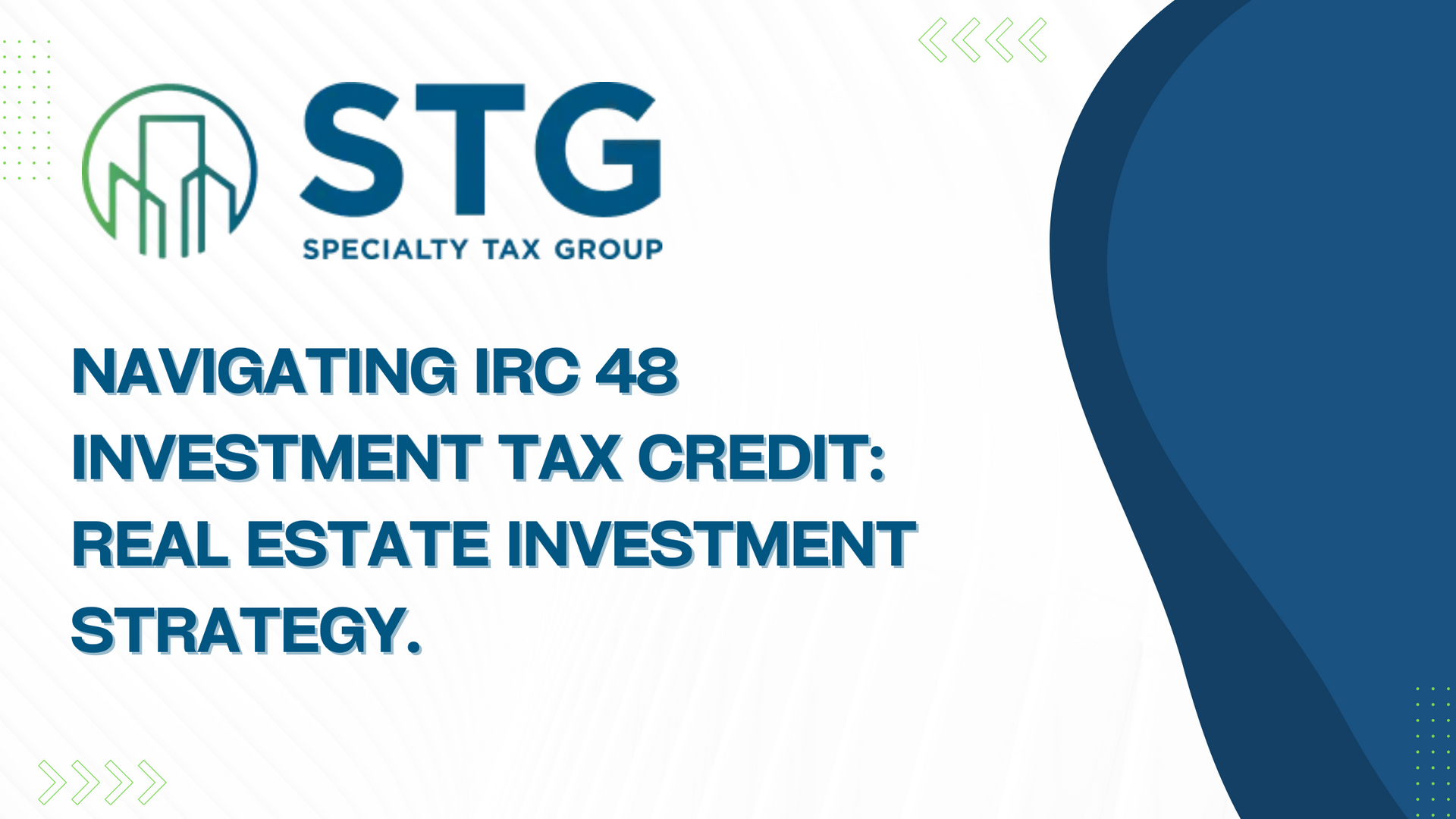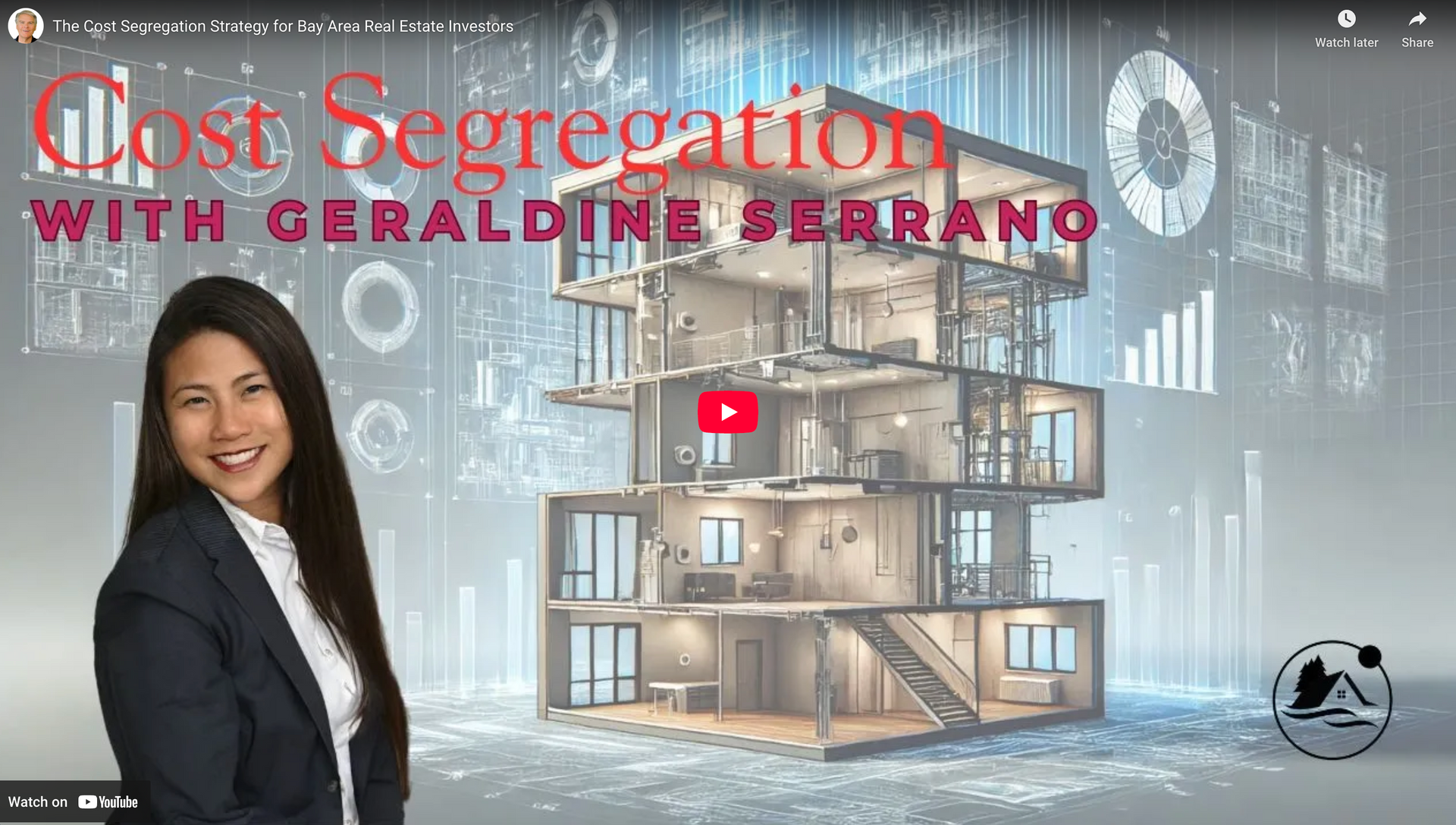This blog post has been researched, edited, and approved by John Hanning and Brian Wages. Join our newsletter below.
Newsletter Form
Thank you for joining our newsletter. We will email you the latest updates every other Thursday at 12pm.
Please try again later.
How Far Back Should You Go for Filing Cost Segregation? Unlocking 10 Years of Tax Benefits
Cost segregation is a powerful tool in the savvy property owner's arsenal. It's like finding hidden treasure in your building - money you didn't even know was there! But here's the million-dollar question: how far back can you dig for this treasure? The answer might surprise you - a whole decade of potential tax savings is up for grabs.
The Cost Segregation Time Machine
Imagine being able to hop in a time machine and optimize your property's tax strategy for the past 10 years. That's essentially what retroactive cost segregation allows you to do. The Internal Revenue Service (IRS) gives property owners a generous 10-year window to file cost segregation studies and amend previous tax returns. This means you can potentially claim accelerated depreciation benefits that you missed out on in the past. For the purpose of cost segregation, Form 3115 enables property owners to adjust their accounting methods without needing to amend past tax returns, making it possible to benefit from these adjustments even for properties acquired beyond the 10-year window.
Why 10 Years Matters
The 10-year timeframe isn't just a random number pulled out of a hat. It aligns with the IRS statute of limitations for certain tax claims, ensuring that property owners have ample opportunity to optimize their tax positions without running afoul of legal constraints. This decade-long lookback period can be a game-changer for many property owners, especially those who acquired buildings years ago but never considered the benefits of cost segregation.
Diving into the Depreciation Pool
When you file a cost segregation study, you're essentially reclassifying parts of your property to take advantage of shorter depreciation schedules. Instead of depreciating the entire building over 39 years (for commercial properties) or 27.5 years (for residential rental properties), you can break it down into components:
- 5-year property: Think commercial kitchen equipment, carpeting, and some fixtures
- 7-year property: Includes office furniture and certain machinery
- 15-year property: Covers land improvements like parking lots and landscaping
By accelerating depreciation on these components, you can significantly reduce your taxable income in the early years of property ownership. And with the 10-year lookback, you might be able to claim these benefits even if you've owned the property for a while.
The Nitty-Gritty of Retroactive Filing
Filing a cost segregation study retroactively isn't as simple as waving a magic wand, but it's not rocket science either. Here's what you need to know:
- Gather your documentation: You'll need detailed records of your property acquisition and any improvements made over the years.
- Conduct a thorough study: This involves analyzing every nook and cranny of your property to identify assets eligible for accelerated depreciation.
- Amend your tax returns: You'll need to file Form 3115 (Application for Change in Accounting Method) along with amended returns for the years you're adjusting.
- Be prepared for scrutiny: Retroactive filings may increase the likelihood of an IRS audit, so make sure everything is buttoned up tight.
The Tax Implications: A Double-Edged Sword
While the potential for tax savings is exciting, it's important to understand the full picture. Retroactive cost segregation can be like a seesaw - it might lower your tax bill now, but it could mean higher taxes down the road. Here's why:
- Immediate benefits: You'll likely see a significant reduction in taxable income for the years you're amending.
- Future considerations: Since you're accelerating depreciation, you'll have less to depreciate in future years, which could mean higher taxes later on.
It's all about timing and cash flow. Many property owners find that the immediate tax relief and improved cash flow outweigh the potential for higher taxes in the distant future.
Best Practices for Retroactive Cost Segregation
To make the most of your retroactive cost segregation filing, keep these tips in mind:
- Work with experts: This isn't a DIY project. Engage qualified professionals who specialize in cost segregation studies.
- Stay compliant: Make sure you're following all IRS guidelines to the letter.
- Think strategically: Consider how cost segregation fits into your overall tax and investment strategy.
- Keep meticulous records: Documentation is key, especially if you're going back several years.
The Bottom Line
Cost segregation can be a powerful tool for property owners looking to optimize their tax strategy. With the ability to go back 10 years, even long-time property owners have the opportunity to unlock significant tax benefits. It's like finding money in the couch cushions of your building - money that can be reinvested, used to pay down debt, or simply improve your cash flow.
Remember, while the 10-year window provides a great opportunity, it's not a one-size-fits-all solution. Every property and every owner's financial situation is unique. That's why it's crucial to work with experienced professionals who can guide you through the process and help you make the best decisions for your specific circumstances.
Don't leave money on the table. If you own commercial or residential rental property and haven't explored cost segregation, now's the time to take action. With the potential to look back a full decade, you might just uncover a tax treasure trove you never knew existed.
Ready to unlock the hidden value in your property?
Specialtytaxgroup (STG) is here to help you navigate the complexities of cost segregation and maximize your tax benefits. Don't wait another day to start saving - contact STG now and let's put your property to work for you!
FAQs
What is retroactive cost segregation?
Retroactive cost segregation allows property owners to apply a cost segregation study to past tax years, potentially claiming missed depreciation benefits for up to 10 years.
How far back can I go to file a cost segregation study?
You can typically go back up to 10 years to retroactively file a cost segregation study, in line with the IRS statute of limitations for amending tax returns.
What are the key benefits of retroactive cost segregation?
The main benefit is the ability to claim accelerated depreciation on eligible property components, which can result in significant tax savings and improved cash flow.
Is there a risk of an IRS audit when filing retroactively?
Retroactive filings may increase the likelihood of an IRS audit, so it's crucial to follow all guidelines accurately and work with professionals to minimize risks.
Can retroactive cost segregation result in higher taxes later?
Yes, while it reduces taxable income immediately, it may lead to less depreciation in future years, potentially increasing your taxes down the road. However, the upfront cash flow benefits often outweigh this concern for many property owners.
2024 Tax Guide
Have A Question?
Contact us today and our friendly team will reach out as soon as possible.
All Rights Reserved | Specialty Tax Group | Powered by Automationlinks | Privacy Policy






